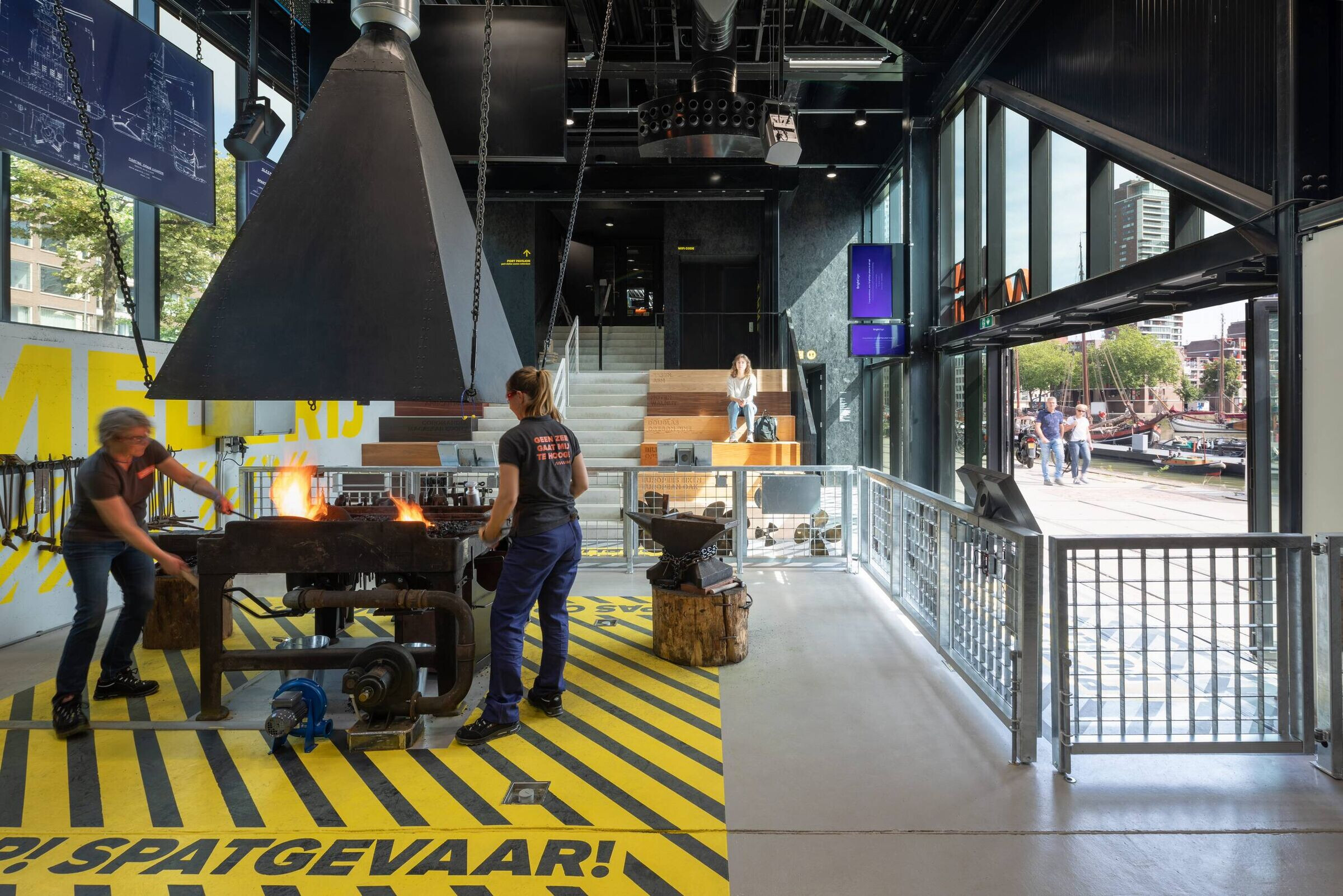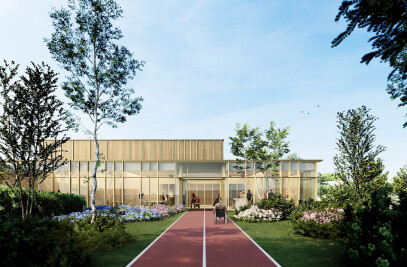MoederscheimMoonen Architects has designed the new Port Pavilion in the historic Maritime District in Rotterdam. The architects have created a new compact building that replaces the three outdated pavilions that used to be in its place. The pavilion brings more transparency and visibility in order for the historic harbor and the activities that take place in the building can be clearly seen.

In the new pavilion, a variety of functions come together. The pavilion houses the Port Visit Center of the Port of Rotterdam, where visitors are introduced to the impressive harbor of the city. What you’ll also find are the workshops of the Maritime Museum. Here, the welders, blacksmiths and carpenters work on the maintenance of the historic fleet in the museum harbor. These workshops are open to the public and bring the historic and current harbor together since all indoor functions are connected. You can simply walk through the Port Visit Center into the workshops of the Maritime Museum! Next to this, there is space for the restaurants/cafés on the two ends of the building.

MoederscheimMoonen Architects designed the pavilion under strict urban planning conditions. The building was only allowed to be eight meters wide, just like the old pavilions were. This resulted in an elongated building that extends and runs parallel to the street and the quay. Due to the building being shorter than the former pavilions, there is a clearer view of the historic harbor from the street.

In order to make the pavilion clearly visible, MoederscheimMoonen chose to draw extra attention to the ends of the building. These ends consists of large canopies that are real eye-catchers on both sides of the city. In the middle of the building is a cross-section with a staircase that can also function as a grandstand and connects the street with the waterfront.

On eye level, the building has been made as transparent as possible, so the activities inside and on the water can be openly seen. Above the plinth, the façade is finished with aluminum cladding in triangular shapes. These shapes refer to the steel lattice structures and cranes that are in the harbor. The triangles are omitted in some places in order to create more depth and introduce a dynamic play of light and shade. The triangular panels have various gloss finishes that appear to reflect differently when hit by sunlight, suggesting the shimmer of the water in the harbor.

The new building is reuses the existing foundation and the main portals of the steel construction of the old pavilions. Other parts of the steel construction have been used as donor profiles in the new building. This way, the old materials are used sustainably and also leave a piece of history in the new building.

“The street next to the pavilion (Schiedamsedijk) has always been a bit of a messy part of the city center, and the new pavilion ensures much more contact with the old fleet and the water, which makes a great hotspot between the famous Coolsingel and the Erasmus Bridge.” Says architect Erik Moederscheim. The area around the pavilion will undergo a serious transformation in the coming years with a mayor focus on making the area more green. The outer area will be finished in 2022.


















































